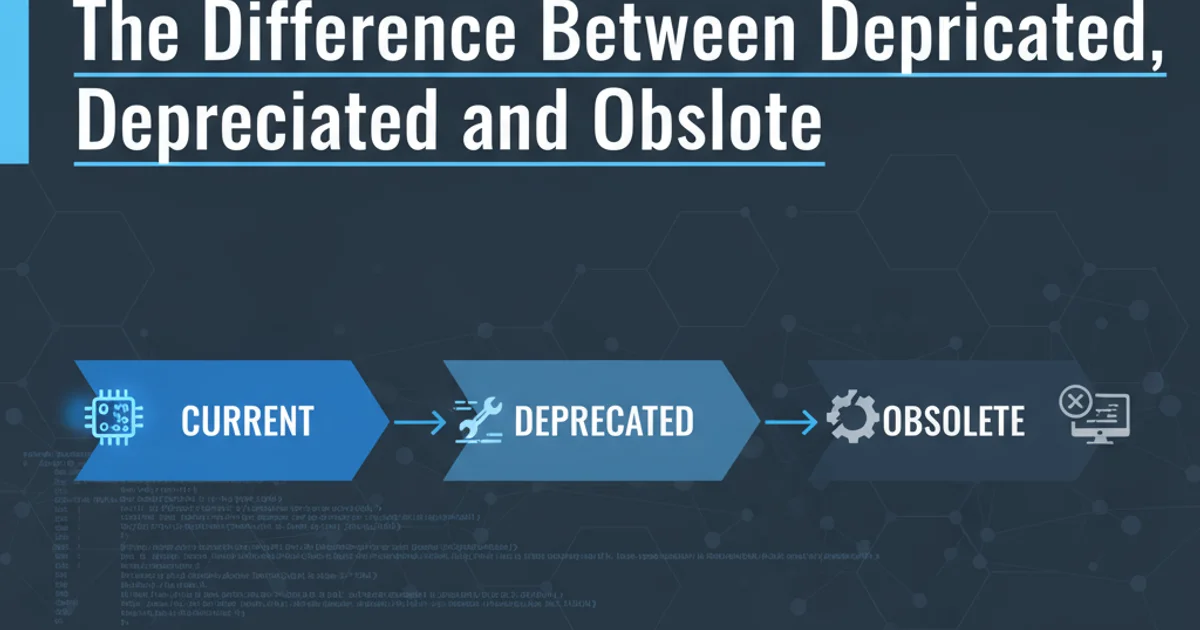-XX:+UseConcMarkSweepGC (what is default young generation collector?)
Categories:
Understanding -XX:+UseConcMarkSweepGC and its Young Generation Collector

Explore the intricacies of the Concurrent Mark Sweep (CMS) garbage collector in Java, focusing on its young generation collection strategy and common misconceptions.
The -XX:+UseConcMarkSweepGC flag in Java enables the Concurrent Mark Sweep (CMS) garbage collector. While CMS is primarily known for its low-pause-time collection of the old generation, a common question arises regarding its young generation collection mechanism. This article delves into how CMS handles the young generation, clarifies its default behavior, and discusses the implications for application performance.
CMS and the Young Generation: A Dedicated Approach
Despite its name emphasizing 'Concurrent Mark Sweep' for the old generation, CMS does not use a concurrent or mark-sweep algorithm for the young generation. Instead, when CMS is enabled, the young generation typically uses a parallel copying collector. This collector is designed for high throughput and efficient collection of short-lived objects, which are characteristic of the young generation.
flowchart TD
A[Application Start] --> B{GC Configuration: -XX:+UseConcMarkSweepGC}
B --> C[Young Generation: Parallel Copying Collector]
B --> D[Old Generation: Concurrent Mark Sweep (CMS) Collector]
C --> E[Minor GC (Stop-the-World)]
D --> F[Major GC (Concurrent Phases + Stop-the-World)]
E --> G[Application Continues]
F --> GGarbage Collection Flow with CMS Enabled
The parallel copying collector works by dividing the young generation into an Eden space and two Survivor spaces. During a minor GC (young generation collection), live objects are copied from Eden and one Survivor space to the other Survivor space. This process is 'stop-the-world' (STW), meaning application threads are paused, but it's highly optimized and typically very fast due to the high mortality rate of young objects.
Why a Parallel Copying Collector for Young Generation?
The choice of a parallel copying collector for the young generation when CMS is active is strategic. Young generation objects are predominantly short-lived. A copying collector is extremely efficient for this scenario because it only copies live objects, effectively reclaiming large amounts of dead space with minimal overhead. A mark-sweep approach would be less efficient for the young generation due to the high number of objects to mark and the fragmentation it could introduce.
public class YoungGenExample {
public static void main(String[] args) {
for (int i = 0; i < 1000000; i++) {
// These objects are typically short-lived and collected by Minor GC
Object obj = new Object();
String s = new String("Hello" + i);
}
System.out.println("Finished creating objects.");
}
}
Example of short-lived objects typically collected in the young generation.
Configuring Young Generation with CMS
You can influence the young generation's behavior even when using CMS. Key JVM flags include:
-Xmn<size>or-XX:NewSize=<size>and-XX:MaxNewSize=<size>: Controls the initial and maximum size of the young generation.-XX:SurvivorRatio=<ratio>: Adjusts the ratio between Eden and Survivor spaces. For example, a ratio of 8 means Eden is 8 times larger than each Survivor space.-XX:NewRatio=<ratio>: Defines the ratio between the old and young generation sizes. For example, a ratio of 2 means the old generation is twice the size of the young generation.
Careful tuning of these parameters can significantly impact minor GC pause times and the promotion rate of objects to the old generation, thereby affecting overall application performance.